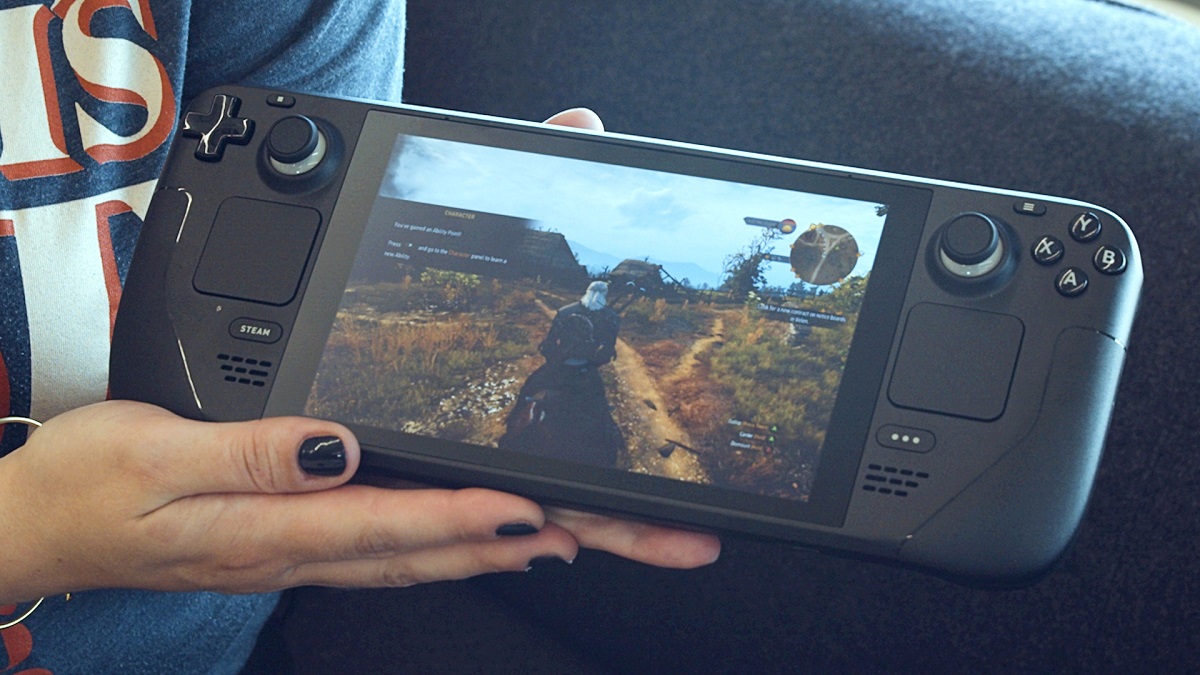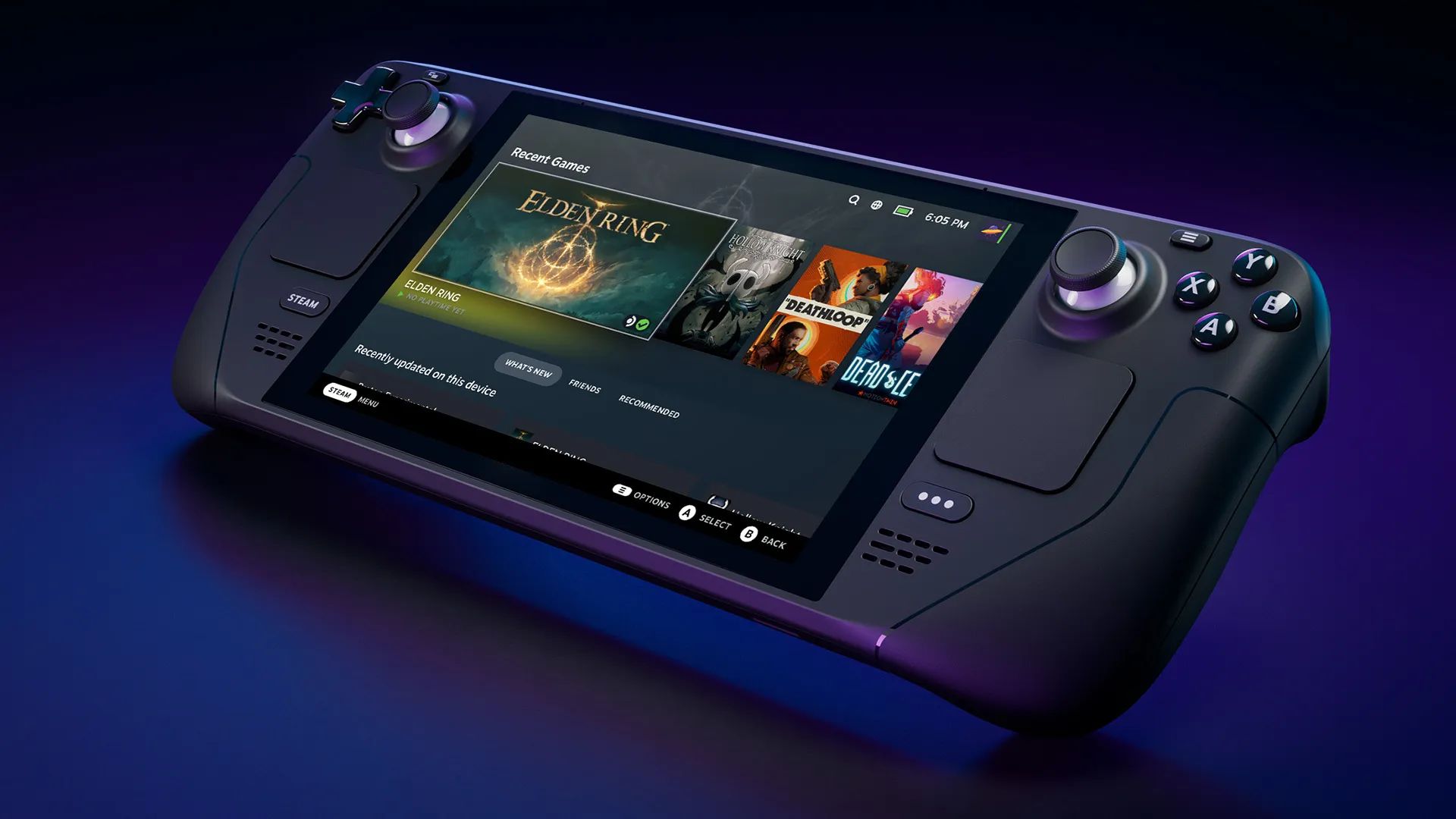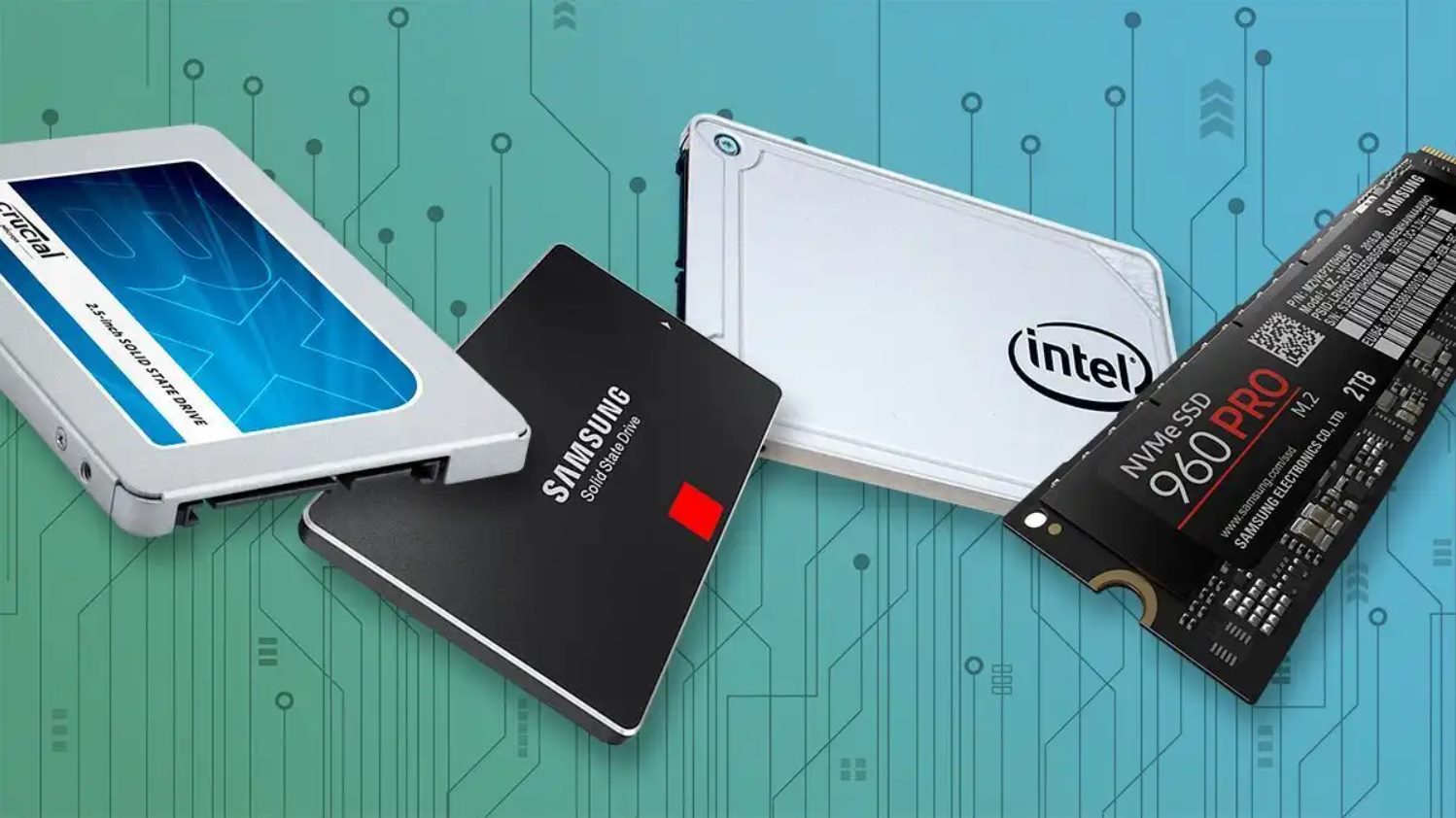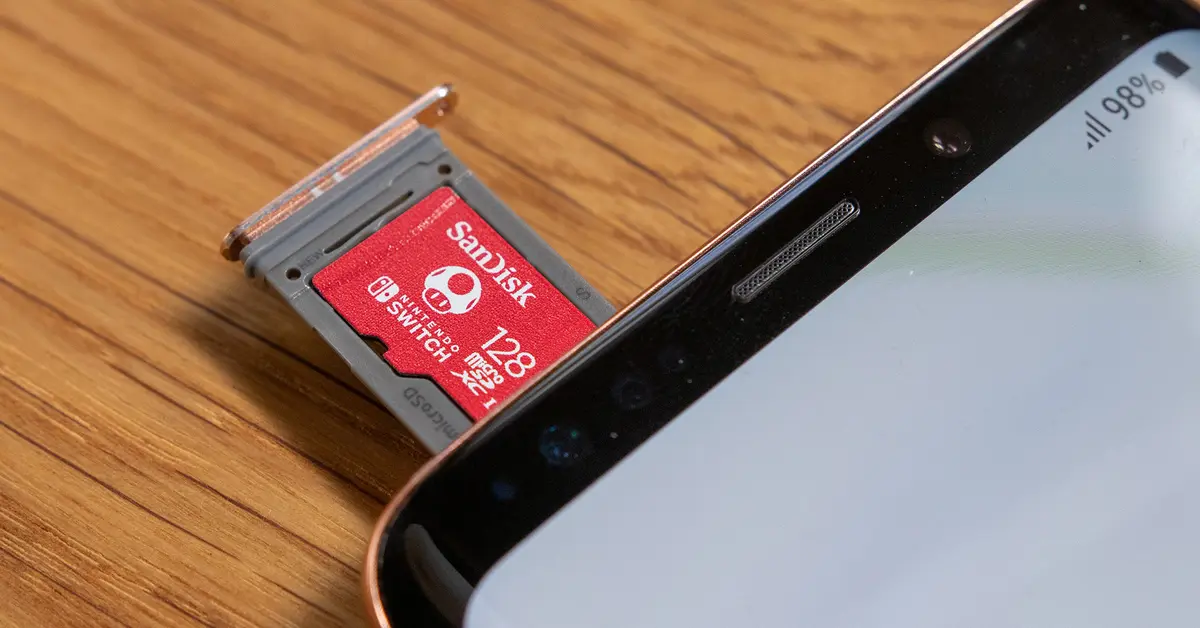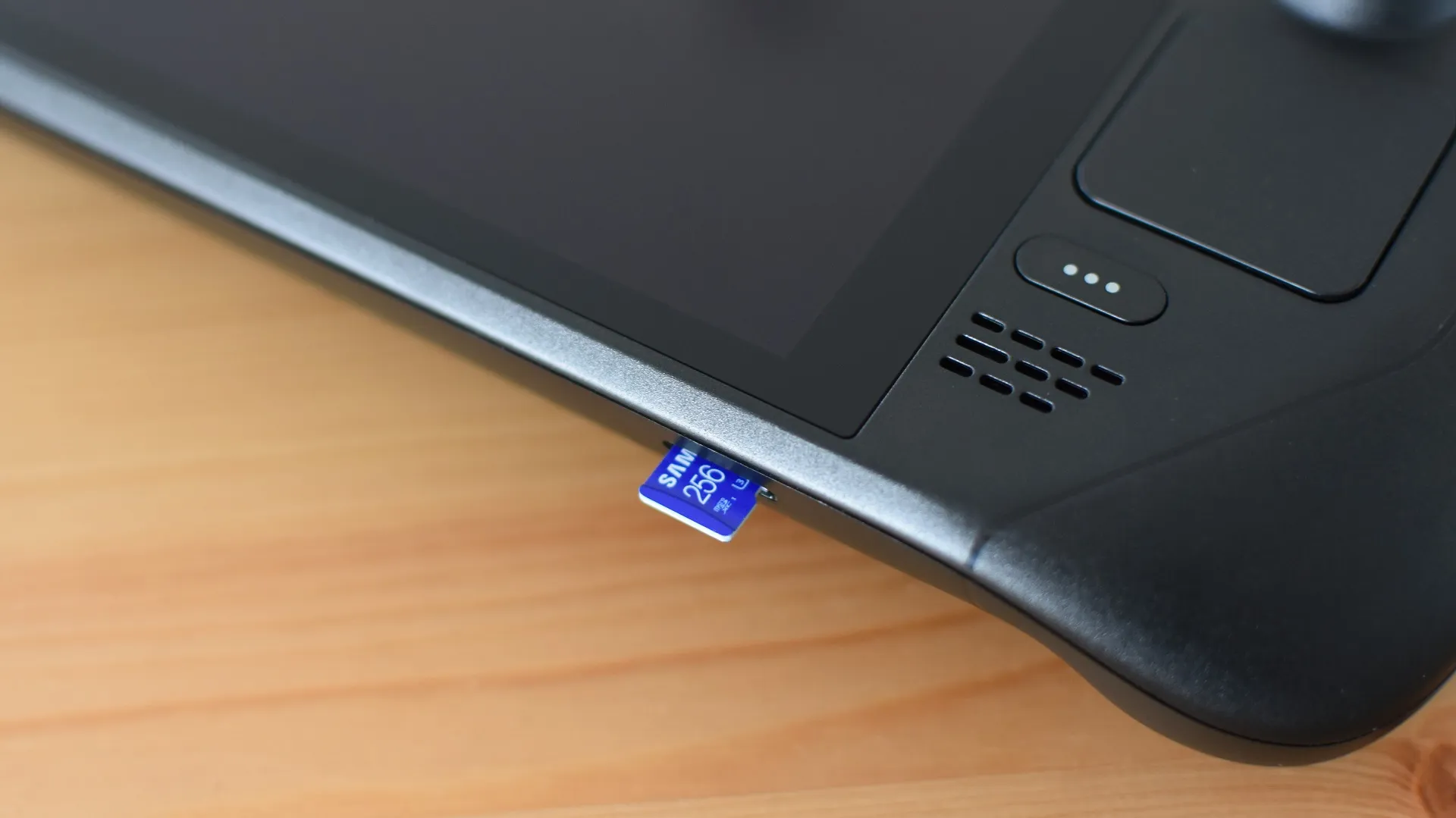Introduction
Welcome to our comprehensive guide on the RAM (Random Access Memory) capacity of the highly anticipated gaming console, Steam Deck. As gaming technology continues to evolve, it is crucial for gamers to understand the importance of RAM and how it contributes to their gaming experience. In this article, we will explore the significance of RAM in the context of Steam Deck, provide detailed information on its RAM capacity, examine the impact of RAM usage in different games, and offer tips for optimizing RAM usage.
Steam Deck is an innovative handheld gaming device developed by Valve Corporation. It combines the portability of a handheld console with the power of a gaming PC, allowing players to enjoy their favorite PC games on the go. With its impressive hardware specifications and robust performance capabilities, the Steam Deck is set to revolutionize the gaming industry.
RAM plays a vital role in the smooth operation and performance of any computing device, including gaming consoles. It serves as temporary storage for data that the CPU (Central Processing Unit) needs to access quickly. In gaming, RAM is responsible for storing and quickly retrieving game assets, such as textures, audio files, and game world data. The amount of RAM available directly impacts the game’s performance, loading times, and overall gaming experience.
In the next section, we will dive into the specific RAM capacity of the Steam Deck and understand how it compares to other gaming consoles on the market. We will also explore the RAM requirements of popular games and the benefits of having more RAM in the Steam Deck.
So, whether you are a die-hard gamer eagerly awaiting the release of Steam Deck or simply curious about the technical aspects of gaming consoles, this article aims to provide you with valuable insights into the RAM capacity of the Steam Deck and its significance in delivering an exceptional gaming experience.
What is Steam Deck?
The Steam Deck is an upcoming handheld gaming device developed by Valve Corporation. It is designed to provide gamers with the ability to play their favorite PC games on the go, without compromising on performance or graphical quality. The device combines the convenience and portability of a handheld console with the power and versatility of a gaming PC, making it an exciting prospect for gaming enthusiasts.
At its core, the Steam Deck is essentially a handheld PC. It runs on a custom version of SteamOS, which is Valve’s Linux-based operating system. This allows gamers to access their entire Steam library and play a wide range of PC games directly on the device. The Steam Deck features built-in controllers, including analog sticks, D-pad, buttons, and trackpads, offering a familiar and comfortable gaming experience.
In terms of hardware, the Steam Deck boasts impressive specifications. It is powered by a custom AMD APU (Accelerated Processing Unit) that combines a quad-core Zen 2 CPU with AMD RDNA 2 architecture for the GPU. This powerful combination ensures smooth gameplay and excellent graphics performance. The device also includes a 7-inch LCD touchscreen with a resolution of 1280×800 pixels, providing crisp visuals and vibrant colors.
One of the standout features of the Steam Deck is its flexibility. It not only serves as a gaming device but can also be used as a portable workstation. The device supports various productivity apps and software, allowing users to browse the web, stream media, and even install and use software like a traditional PC. This versatility makes it an appealing option for gamers and non-gamers alike.
Additionally, the Steam Deck offers expandable storage through a microSD card slot, enabling users to store and access a large library of games. It also includes a USB-C port, which can be used for charging, connecting accessories, or even connecting to an external display for a larger gaming experience.
The potential of the Steam Deck is immense, as it opens up new possibilities for gaming on the go. It gives gamers the freedom to play high-quality PC games anytime, anywhere, without the need for a desktop or laptop computer. With its robust hardware, customizable controls, and extensive game library, the Steam Deck is poised to be a game-changer in the handheld gaming industry.
Why does RAM matter in Steam Deck?
RAM, or Random Access Memory, is a critical component in any computing device, including gaming consoles like the Steam Deck. It plays a pivotal role in ensuring smooth and efficient operation, especially when it comes to gaming. Let’s explore why RAM matters in the context of the Steam Deck.
When you launch a game on the Steam Deck, the game assets, such as textures, audio files, and game world data, need to be loaded into the RAM for quick access by the CPU. The more RAM you have, the more game data can be stored, reducing the need for frequent loading from the storage drive. This results in faster loading times and seamless gameplay.
RAM is also responsible for storing temporary data that the CPU needs to access quickly during gameplay. This includes variables, AI calculations, and other game-related processes. Insufficient RAM can lead to reduced performance, as the CPU has to constantly retrieve data from slower storage devices, causing lag or frame rate drops.
Furthermore, the Steam Deck is designed to run PC games, which often have higher system requirements compared to mobile or console games. These PC games are optimized to take advantage of the extra processing power and memory available in gaming PCs, and having sufficient RAM ensures that the Steam Deck can handle these demanding games without compromising on performance.
In addition, RAM capacity plays a crucial role in multitasking. The Steam Deck allows users to not only play games but also perform other tasks like web browsing, streaming, or running productivity software. Having ample RAM ensures that these tasks can be performed smoothly in the background while gaming without any noticeable impact on performance.
It is important to note that while RAM is crucial, it must be complemented by other components like the CPU and GPU. These components work together to deliver a seamless gaming experience. However, RAM acts as a bridge between the storage and processing units, allowing for faster data access and retrieval, resulting in smoother gameplay and improved overall performance.
Overall, RAM is a critical element in the Steam Deck as it directly impacts loading times, game performance, multitasking capabilities, and the overall gaming experience. Having an adequate amount of RAM ensures that the Steam Deck can handle the demands of modern PC games and deliver optimal performance, making it a must-have component for any serious gamer.
How much RAM does Steam Deck have?
The amount of RAM a gaming console has is a crucial factor in determining its overall performance and capability. In the case of the Steam Deck, the device comes with different RAM configurations to cater to varying user needs. Let’s delve into the RAM capacity options available for the Steam Deck.
The base model of the Steam Deck is equipped with 16 GB of LPDDR5 RAM. This is a considerable amount of memory that allows the device to handle demanding PC games with ease. With 16 GB of RAM, users can expect smooth gameplay, faster loading times, and the ability to multitask seamlessly.
In addition to the base model, Valve Corporation offers two additional models with increased RAM capacity. The mid-tier model of the Steam Deck features 32 GB of LPDDR5 RAM, providing an even greater level of performance and multitasking capabilities. This additional RAM allows for more data to be stored and accessed quickly, resulting in enhanced gaming experiences.
For those seeking the ultimate in gaming performance, the top-tier Steam Deck model offers a massive 64 GB of LPDDR5 RAM. This amount of RAM leaves no room for compromise and ensures that the device can handle the most demanding PC games with ease. It also allows for improved multitasking capabilities, making it an excellent choice for gamers who want to do more than just play games on the Steam Deck.
It’s important to note that the RAM capacity of the Steam Deck is not expandable. Unlike storage, which can be expanded using a microSD card, the RAM size you choose when purchasing the device is fixed. Therefore, it’s crucial to carefully consider your gaming needs and requirements to determine the appropriate RAM capacity.
While the base model of the Steam Deck with 16 GB of RAM will be sufficient for many gamers, those who plan to run demanding games or engage in heavy multitasking may find the mid-tier or top-tier models with 32 GB or 64 GB of RAM, respectively, to be a better investment.
Ultimately, the RAM capacity of the Steam Deck directly impacts its performance, multitasking capabilities, and user experience. It is crucial to select a model with the right amount of RAM to ensure smooth and efficient gameplay, faster loading times, and the ability to handle demanding PC games with ease.
RAM usage in different games
When it comes to gaming, different games have varying RAM requirements based on their complexity, graphical fidelity, and system optimization. Understanding the RAM usage of different games is essential for maximizing performance on the Steam Deck. Let’s explore how RAM is utilized in a variety of games.
Less demanding games, such as indie titles or older releases, typically have lower RAM requirements. These games often utilize around 4-8 GB of RAM. Examples include 2D platformers, puzzle games, and retro-style titles. With the base model of the Steam Deck featuring 16 GB of RAM, you can comfortably run these games without any issues, leaving plenty of room for other tasks or background processes.
As we move to more graphically demanding games, the RAM usage increases due to the need to store higher-resolution textures, complex 3D models, and larger game worlds. Many modern AAA games fall into this category. These games can utilize anywhere from 8 GB to 16 GB of RAM or even more in some cases. With the 16 GB RAM configuration, the base model of the Steam Deck can handle these games smoothly, providing an immersive gaming experience without compromising on performance.
For gamers who prefer to play heavily modded games or titles that have extensive open-world environments, additional RAM may be beneficial. Modding can increase the RAM usage of a game, especially when using high-resolution textures and numerous mods simultaneously. In these cases, the 32 GB or 64 GB RAM configurations available in the mid-tier and top-tier models of the Steam Deck can provide more headroom and ensure smooth gameplay without any performance limitations.
It’s worth noting that RAM usage can vary significantly within a specific game depending on the settings and customizations applied by the user. Higher graphical settings, increased view distances, and additional game modifications can all contribute to higher RAM usage. Therefore, it’s essential to monitor and optimize in-game settings to strike a balance between visual quality and RAM usage for an optimal gaming experience on the Steam Deck.
Ultimately, the RAM usage in different games varies significantly based on factors such as game complexity, graphical fidelity, and customization options. The base model of the Steam Deck with 16 GB of RAM is well-suited for most gaming scenarios, providing enough memory overhead for smooth gameplay. However, if you plan on playing more demanding games or heavily modding your games, opting for the higher RAM configurations available in the mid-tier or top-tier models can provide further headroom and ensure an exceptional gaming experience.
Benefits of more RAM in Steam Deck
Having more RAM in the Steam Deck can bring several significant advantages, especially when it comes to gaming and multitasking. Let’s explore the benefits of opting for higher RAM configurations in the Steam Deck.
1. Improved Performance: More RAM allows for smoother gameplay and reduced loading times. Games that require significant memory resources, such as open-world titles or heavily modded games, can benefit greatly from having additional RAM. With more memory available, the Steam Deck can store and retrieve game assets quickly, resulting in seamless gameplay and improved performance.
2. Enhanced Multitasking: Extra RAM enables the Steam Deck to handle multitasking more efficiently. While gaming, you may want to have other apps or browser tabs open in the background. With more RAM, the device can seamlessly switch between running the game and handling the additional tasks, ensuring a smooth and uninterrupted user experience.
3. Future-Proofing: Games are becoming increasingly resource-demanding, and developers continue to push the boundaries of visual fidelity and detail. Opting for higher RAM configurations, such as the 32 GB or 64 GB options available in the Steam Deck, can provide future-proofing. As games evolve and require more memory, having a generous amount of RAM ensures that your Steam Deck will remain capable of handling even the most demanding releases for years to come.
4. Improved Game Modding: If you enjoy modding your games with high-resolution textures, additional content, or gameplay modifications, more RAM is beneficial. Modding can increase RAM usage, and having extra memory allows for a smoother experience, preventing performance drops or memory-related issues when running heavily modded games on the Steam Deck.
5. Seamless VR Experience: The Steam Deck has the potential to support virtual reality (VR) gaming. VR games have higher system requirements due to the need to render two distinct views simultaneously. With additional RAM, the Steam Deck can comfortably handle the memory-intensive demands of VR games, ensuring a smooth and immersive virtual reality experience.
While the base model of the Steam Deck with 16 GB of RAM is sufficient for many gaming scenarios, opting for higher RAM configurations offers tangible benefits for gamers seeking top-tier performance, future-proofing, and the ability to handle resource-intensive games and tasks.
Ultimately, the amount of RAM you choose for your Steam Deck should be based on your specific gaming needs and preferences. Assessing the types of games you play, whether you engage in heavy multitasking, and your interest in game modding can help determine the ideal RAM configuration that will deliver the best possible gaming experience on the Steam Deck.
Tips for optimizing RAM usage in Steam Deck
While the Steam Deck comes with ample RAM to handle most gaming scenarios, optimizing its usage can further enhance your gaming experience and ensure efficient performance. Here are some tips to help you optimize RAM usage on the Steam Deck:
1. Close Unused Apps: Before launching a game on the Steam Deck, make sure to close any unnecessary background applications. These applications consume RAM and can hinder gaming performance. Closing unused apps frees up valuable memory resources for your game.
2. Adjust In-Game Settings: Many games allow you to customize graphical settings, such as texture quality, shadow resolution, and anti-aliasing. Adjusting these settings can reduce the RAM usage of the game. Consider lowering certain settings to strike a balance between visual quality and RAM usage without compromising on the overall gaming experience.
3. Monitor Background Processes: Keep an eye on any unwanted or unnecessary background processes that may be running on the Steam Deck. Some applications or services might start automatically and consume valuable RAM. Disable or uninstall any processes that are not needed for gaming to free up memory resources.
4. Manage Game Mods: If you are using mods in your games, be mindful of their impact on RAM usage. Some mods can significantly increase memory requirements. Disable or remove any mods that are not essential or causing excessive RAM usage, and prioritize those that provide the most significant improvements or desired gameplay changes.
5. Utilize Storage Optimally: The Steam Deck provides expandable storage via a microSD card slot. Utilize this feature to offload games or files that are not frequently accessed, freeing up RAM for more demanding games. Prioritize storing frequently played games or resource-intensive games on the internal storage for faster access.
6. Keep Drivers Updated: Ensure that you have the latest graphics drivers and system updates installed on your Steam Deck. Updated drivers often come with performance optimizations and bug fixes, which can enhance overall gaming performance and potentially reduce RAM usage.
7. Regularly Restart the Device: Restarting the Steam Deck periodically can help to clear out temporary files and release any occupied memory. This can lead to improved performance and efficiency, ensuring that the available RAM is utilized optimally.
By implementing these tips, you can optimize RAM usage on the Steam Deck, maximizing performance, and ensuring a seamless gaming experience. Remember that finding the right balance between RAM usage, visual settings, and overall performance will vary based on the specific game and your personal preferences. Regularly experimenting and fine-tuning these settings will allow you to create a gaming experience that suits your playstyle and hardware capabilities.
Conclusion
In conclusion, understanding the significance of RAM in the Steam Deck is crucial for gamers looking to optimize their gaming experience on this innovative handheld gaming device. RAM plays a pivotal role in ensuring smooth gameplay, faster loading times, and efficient multitasking capabilities.
We explored what the Steam Deck is and how it combines the portability of a handheld console with the power and versatility of a gaming PC. Its impressive hardware specifications and extensive game library make it an exciting prospect for gamers of all kinds.
We discussed the importance of RAM in the Steam Deck, highlighting how it impacts game performance, multitasking capabilities, and the overall user experience. With the base model offering 16 GB of RAM and higher RAM configurations available, gamers have the option to choose the appropriate RAM capacity based on their gaming needs.
Furthermore, we examined the RAM usage in different games, showcasing how it can vary based on factors such as game complexity, graphical fidelity, and customization options. Understanding these variations allows gamers to make informed decisions when selecting their Steam Deck model and optimizing their gaming experience.
Moreover, we presented the benefits of having more RAM in the Steam Deck, including improved performance, enhanced multitasking, future-proofing, better game modding capabilities, and seamless VR experiences. These benefits cater to different gaming preferences, providing options for gamers who require additional memory resources.
Lastly, we provided tips for optimizing RAM usage in the Steam Deck, such as closing unused apps, adjusting in-game settings, managing game mods, utilizing storage optimally, and keeping drivers updated. Implementing these tips can further enhance performance and maximize the available RAM on the Steam Deck.
In summary, RAM plays a critical role in the overall performance and gaming experience of the Steam Deck. The right RAM configuration, combined with optimization techniques, can ensure smooth gameplay, efficient multitasking, and an exceptional gaming experience on this portable gaming device.









